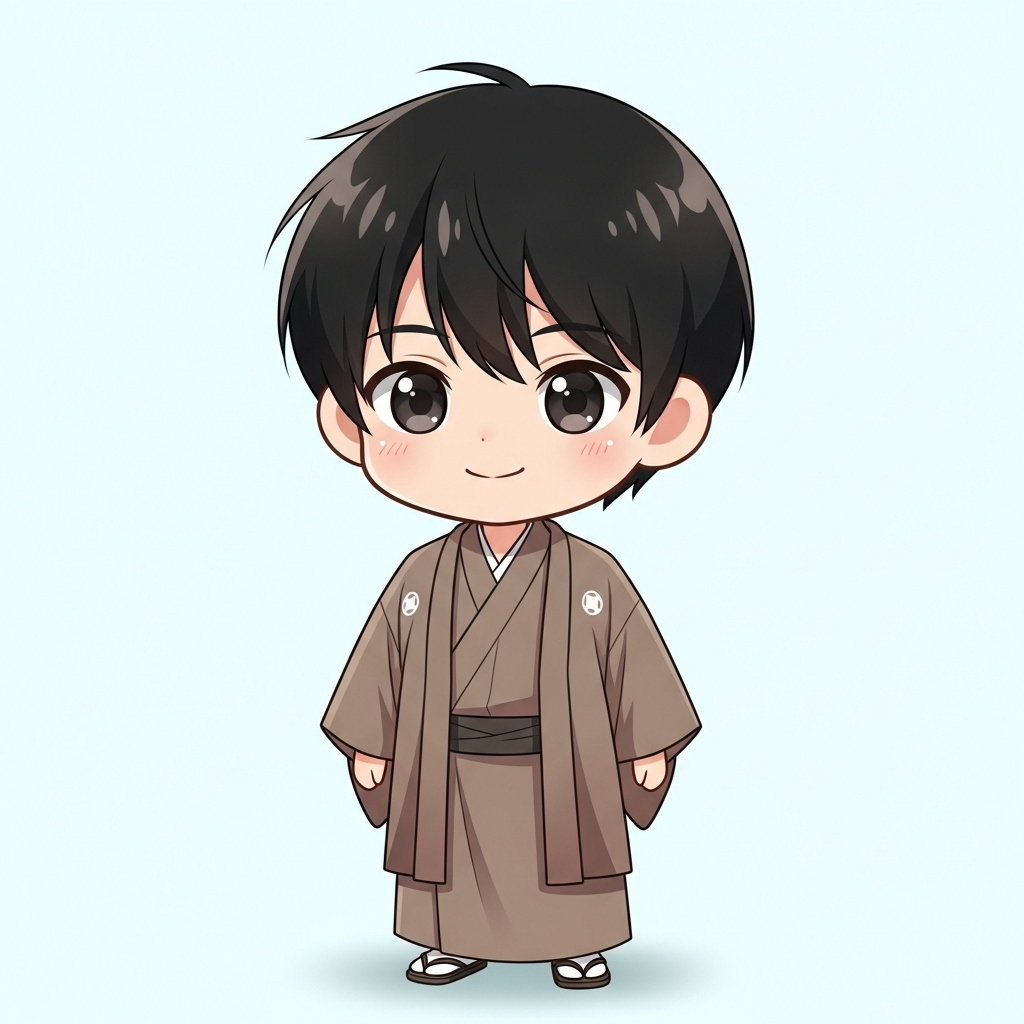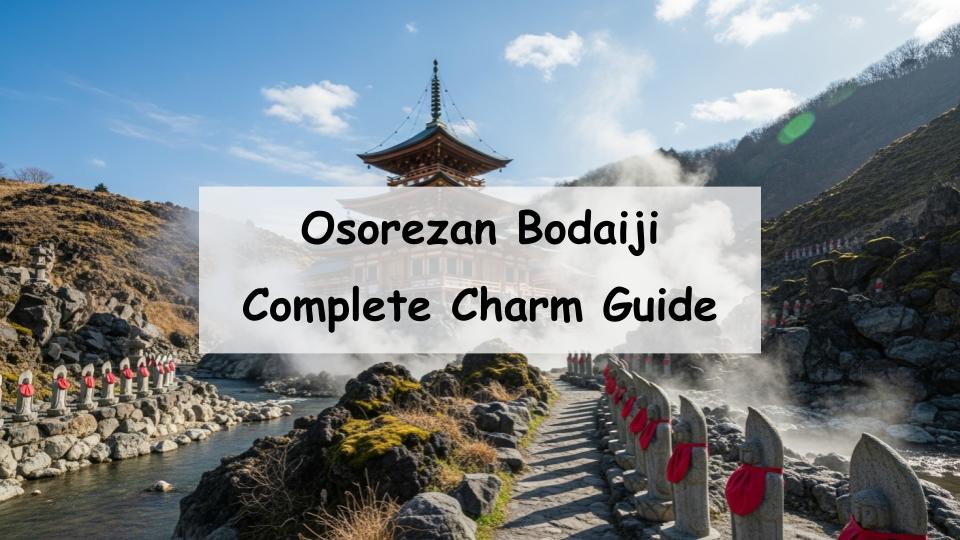Have you ever wondered what kind of place Osorezan Bodai-ji Temple in Aomori Prefecture is? You might be asking yourself, “Is a sacred site like this scary? Can I actually visit it? What are the main attractions?” This article is here to answer all your questions and share the full appeal of Osorezan Bodai-ji Temple. Despite its name, which may sound frightening, Osorezan Bodai-ji is actually a serene and mystical spot surrounded by natural beauty and historical architecture, offering a peaceful refuge for the soul. In this article, we’ll cover the temple’s key features, must-see sights, how to access the site, and nearby attractions. Whether you’re a first-time visitor or simply curious, this guide will help you enjoy your visit with confidence.
- What is Osorezan Bodai-ji Temple? History and Overview
- Attractions of Osorezan Bodai-ji Temple
- Events and Festivals at Osorezan Bodai-ji Temple
- How to Access Osorezan Bodai-ji Temple
- Important Tips for Visiting Osorezan Bodai-ji Temple
- Tourist Information Around Osorezan Bodai-ji Temple
- Conclusion: Experience the Extraordinary Peace of Osorezan Bodai-ji Temple
- A Message from the Guide
What is Osorezan Bodai-ji Temple? History and Overview
Basic Information about Osorezan Bodai-ji Temple
Osorezan Bodai-ji Temple is located on the Shimokita Peninsula in Aomori Prefecture and is recognized as one of Japan’s three major sacred sites. Situated about 400 meters above sea level, the temple draws many visitors seeking spiritual healing and peace. Surrounded by nature throughout the seasons, especially refreshing in summer, it offers a unique and tranquil atmosphere.
Historical Background of Osorezan as a Sacred Site
The sacred site of Osorezan dates back to the Heian period. Historically, it was known as a place to comfort the souls of the deceased, attracting people seeking spiritual solace for centuries. Today, it continues to be a place for purification of the heart and prayer, carrying deep religious significance built up over many generations.
Why Is It Called “Osorezan”? The Origin of the Name
The name “Osorezan” literally means “Fear Mountain,” which may sound intimidating. However, this name reflects its role as a symbolic boundary between life and death, rather than something to be feared. The mountain is a sacred site where the spirits of the dead are honored and comforted, emphasizing renewal rather than terror.
Attractions of Osorezan Bodai-ji Temple
The Jizo Statues and Sai-no-Kawara
At the heart of Osorezan lies Sai-no-Kawara, a riverside graveyard lined with Jizo statues, which are believed to protect the souls of deceased children. Visitors can experience a solemn and contemplative atmosphere here, making it one of the most iconic and meaningful spots in the temple grounds.
Osorezan Hot Springs (On-site Bathhouses)
Near the temple, natural hot springs flow freely, allowing visitors to relax and soothe their bodies after spiritual activities. The sulfur-rich waters are known for their distinctive aroma and healing properties, enhancing the overall experience of visiting this sacred place.
Unique Landscape Formed by Volcanic Activity
The landscape surrounding Osorezan is shaped by volcanic activity, featuring steaming vents and rocky terrain that create an eerie yet fascinating environment. This rugged terrain combined with the scent of sulfur adds to the mysterious and powerful atmosphere of the temple’s setting.
The Main Hall and Temple Complex
The main hall of Osorezan Bodai-ji is a wooden structure that exudes a solemn and historical presence. The temple complex includes several auxiliary buildings arranged thoughtfully, reflecting its religious importance and the long-standing traditions it upholds.
Events and Festivals at Osorezan Bodai-ji Temple
The Annual Osorezan Grand Festival
Held every July, the Osorezan Grand Festival is the most significant event at the temple. It draws many visitors who participate in Buddhist rituals and prayers conducted by priests. This festival serves to honor the spirits of the dead and reinforce the temple’s spiritual significance.
The Itako Spirit Medium Experience
Osorezan is famous for “Itako,” female spirit mediums who perform “kuchiyose,” or spirit communication rituals. Many visitors come to witness or participate in these unique and mystical experiences. Since these events are sometimes limited and require reservations, advance planning is recommended.
Seasonal Scenery and Highlights for Visitors
Osorezan offers breathtaking views throughout the year, from lush green summers to colorful autumns and snow-covered winters. Each season brings a different charm, providing visitors with fresh perspectives on the temple’s natural and spiritual beauty.
How to Access Osorezan Bodai-ji Temple
Getting There by Train and Bus
To reach Osorezan by public transport, take a train to Shimokita Station or Aomori City and transfer to a bus bound for Osorezan. Bus schedules vary by season, so it is advisable to check timetables in advance. The temple is a short walk from the bus stop.
Access by Car and Parking Information
If you drive, you can take the Tohoku Expressway toward the Shimokita Peninsula. Free parking is available near the temple, making car travel convenient. However, during winter months, snowy conditions require appropriate tires and careful driving.
Nearby Accommodation and Tourist Spots
There are several inns and guesthouses around Osorezan, allowing visitors to stay overnight and explore the area more leisurely. The Shimokita Peninsula also features natural parks and hot springs, making it easy to combine sightseeing with a spiritual visit.
Important Tips for Visiting Osorezan Bodai-ji Temple
Recommended Clothing and Items to Bring
Because of its elevation and climate, even summer visits can be chilly, so bringing warm clothing is advised. Comfortable walking shoes and rain gear are also recommended. Visitors should be mindful of photography rules and restricted areas.
Local Etiquette and Worship Practices
Osorezan is a sacred place that requires respectful behavior. Visitors should speak quietly, avoid littering, and observe proper conduct during worship, such as bowing and praying with hands together. Respecting these customs ensures a meaningful experience.
Opening and Closing Periods of the Temple
The temple closes during winter, typically from November to April, due to heavy snowfall. Planning your visit during the open season is essential to avoid disappointment.
Tourist Information Around Osorezan Bodai-ji Temple
Nature and Attractions of Shimokita Peninsula
Beyond Osorezan, the Shimokita Peninsula offers spectacular coastal views, mountains, and other landmarks like Oma’s famous tuna fishing port and the scenic Hotokegaura cliffs. Outdoor activities like hiking and sightseeing cruises are popular here.
Dining and Souvenir Options
Local restaurants serve fresh seafood and regional specialties. Souvenir shops sell items like locally grown apples and traditional crafts, providing visitors with a taste and memory of the region.
Suggested Itineraries for Day Trips and Overnight Stays
Visitors can plan day trips covering Osorezan and nearby sites or choose a more relaxed overnight stay to fully enjoy the temple and surrounding nature. This guide can help tailor the perfect schedule depending on your interests and time.
Conclusion: Experience the Extraordinary Peace of Osorezan Bodai-ji Temple
The Meaning of Visiting Osorezan Bodai-ji
Osorezan Bodai-ji is a sacred sanctuary where visitors confront life and death, finding purification and comfort for the soul. Its peaceful environment and stunning natural setting offer deep healing and reflection, making it an ideal destination for those seeking spiritual renewal.
A Beginner-Friendly Guide for First-Time Visitors
With proper preparation and understanding of customs, anyone can visit Osorezan with ease. This article has provided the essential information needed to explore the temple’s mystical world and enjoy a memorable and respectful journey.
A Message from the Guide

The access is a bit challenging, but it’s definitely worth the visit.






Comment